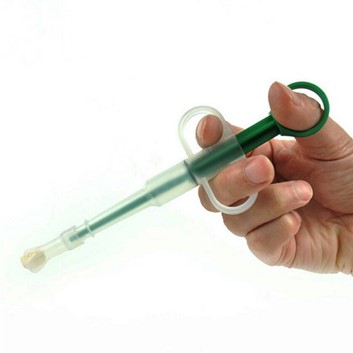Return to article List
Giving medications to pets: How to not lose friends or fingers
One of the common concerns of being a pet parent is figuring out how to get the medications that your pet needs into or onto them without it being traumatic for both of you. Below are some tips and tricks which may help make things easier.
Flea and worm treatments:
If you find treating very difficult then ensure that your pet is on the longest acting flea treatment on the market. For dogs there are 3 and 6 month options, and for cats there is a 3 month option. Additionally, there are both topical and oral treatments available for cats and dogs, so choose which is easiest for your pet. Finally, if your pet runs when you get the treatment out then try to open it in a different room to your pet or an hour or so before you need to give it. Sometimes putting flea treatment on while they are eating or sleeping is easiest.
If you’re having a really hard time you are welcome to bring your pet into the clinic when purchasing flea/worm treatments and we will get a nurse to apply/give them for you.
Pills:
Try hiding the tablet in food. You can use a small amount of wet dog or cat food shaped as a meatball with the tablet completely hidden within it. If you chose to do this, it is often best to have a series of 3 meatballs: 2 without pills and one with. Give the first non-pill meatball then give the pill one, followed quickly by the final non-pill meatball. This should keep them eating and prevent them spitting out the tablet. There are also pill pocket type treats which you can hide tablets in, or for cats with small tablets you can try hiding them in the centre of a temptation cat treat, piece of chicken/tuna, or putting a small amount of margarine on the outside of the tablet.
If unable to get your pet to eat the pill in food then try to have another person hold your pet while you tablet so that you can focus on control of their head instead of their whole body. If this isn’t possible then have their bum facing you or a wall so that they can’t back away while you tablet.
Pill poppers are also available for purchase which allow you to keep your hands out of your cat or small dog’s mouth. Some people find these make pilling much easier.

Liquids:
When giving oral liquid treatments many of the same tricks of giving pills can help. Ensure you draw up the medication and have everything ready before trying to attempt to locate/restrain your animal. Use a syringe to put the liquid just behind the canine teeth in the natural hole between teeth here. Give it swiftly but not so quick that they don’t have a chance to swallow. Some liquids are available in a flavoured option while others are quite bitter, you can ask your vet about which medication your pet is having. If a large amount of liquid is being given often swaddling is necessary for cats.

General:
- Have a plan
- Have things set up beforehand so everything is within reach prior to getting/restraining your pet
- Keep it positive! This is one of the most important things. Giving your pet their meal post treatment, or a special treat, or a good brush/pat if they prefer this. If you can reward your pet for putting up with treatment they are more likely to let you do it again in the future.
- Swaddle your cat in a towel to prevent them scratching you, running away or getting their paws up. https://icatcare.org/advice/how-to-give-your-cat-a-tablet/ has a brief section on wrapping your cat, there are many different videos online which show you how as well, just ensure you do this calmly to prevent working up your cat.
- Vets are happy to work with you to sort out the best option for you and your pet. Sometimes there may be a liquid or flavoured version of the medication your pet is on. Occasionally, depending on the medication being given, there will be something you can use topically instead, or a long acting injection that can be given by your vet.
Return to article List